
Catalog Advanced Search
-
Contains 3 Component(s), Includes Credits
Technology | Sustainability
How might AI transform the way we design sustainable materials? This session explores using generative AI to design nature-inspired, emotionally resonant materials & accelerates eco-friendly adoption by helping designers visualize their applications. By generating textures & color maps & applying them to CAD designs using tools like Keyshot and AI platforms, we can create realistic product renders that connect today's lab innovations to tomorrow's market-ready designs. Examples like cactus leather & the wabi-sabi aesthetic highlight AI's challenges and opportunities in capturing the detailed, imperfect beauty of sustainable natural materials--qualities that deeply resonate with humans. Attendees will learn to integrate AI into workflows for sustainable innovation & use nature-inspired palettes to create and visualize materials that evoke humanizing, nurturing triggers. This session blends technology, craft, and sustainability to inspire innovative approaches to eco-conscious design.
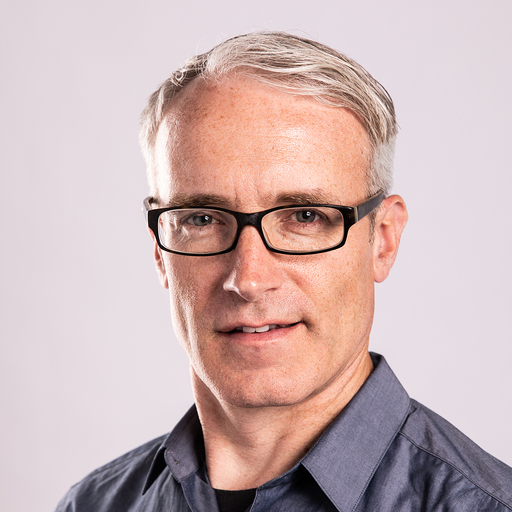
Jason Robinson
Senior Industrial Design Director
IDEO
Jason Robinson has beenleading IDEO’s Industrial Design capabilities since 1995 when he joined thecompany to build and manage the ID prototyping facilities at the Palo Altocampus headquarters.
In his 30 years as anindustrial designer at IDEO, Jason has worked across every industry from highend consumer products to surgical robots, to industrial and durable goods. Hehas numerous design awards but measures his impact by the number of productsand experiences he has helped clients bring to market that are now part of thecultural fabric of everyday life. For example, he has designed many of the gaspumps being used in the world today.
As a Senior DesignDirector based in IDEO's Cambridge studio, Jason helps scope innovationprojects and guide teams to deliver world class solutions that are grounded intangible reality and true to the clients business objectives. He isparticularly active at the intersection of emerging technologies and humanbehavior and loves to experiment with new tools and methods ranging from 3dprinting to AR/VR and the rapid advancement of new AI workflows.
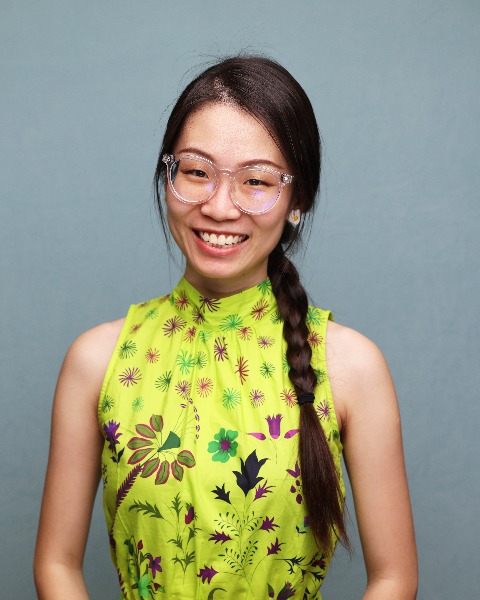
Tiange Wang
Software Design Lead
IDEO
Tiange Wang is an award-winning and internationally-exhibiting designer and creative technologist. Her work investigates innovative interactive paradigms among humans, technology and the environment. Tackling subjects like climate change, holistic wellbeing, multisensory experiences and speculative futures, she employs mediums including multimodal interaction, creative data visualization, multimedia art, installation, food, mix-reality, software, AI and games. As a senior software designer at IDEO, she leads teams in crafting human-centered, planet-conscious, data-informed and GenAI-enabled product experiences across web, mobile and spatial computing platforms, guiding clients through transformative journeys across technology, health, climate, media, and consumer products industries & taking ideas from concept to launch.
-
Register
- Attendees - $50
- More Information
-
Register
-
Contains 3 Component(s), Includes Credits
Sustainability | Industry Directions
Demolition projects have a significant impact on climate change due to the energy and resources required, as well as the emissions created during the process. Material recovery through deconstruction is an unparalleled opportunity for reducing embodied carbon, while also diverting construction waste, reducing exposure to toxic pollutants, protecting natural resources, and creating green jobs.

Argelia Bárcena, LEED AP
Associate, Regional Design Technology Lead
Gensler
Argelia Barcena is a design technology leader and advocate for innovation in architecture. She is a Northwest Regional Design Technology Manager at Gensler, where she leads digital transformation efforts across diverse teams and projects. With two decades of experience, Argelia has worked with leading architecture firms and maintains a strong connection to academia by having served as adjunct faculty at Academy of Art University, City College of San Francisco, and California College of the Arts.
She holds an architecture degree from California Polytechnic State University, San Luis Obispo, and an executive education certificate from the Harvard Graduate School of Design.
Argelia was recently recognized as one of the “Most Influential Women in Bay Area Business 2024” by the San Francisco Business Times. She currently serves as a Board Director for AIA San Francisco, and Chair of the AIASF Technology in Architectural Practice Knowledge Community, in addition to being Regional Lead for Women in BIM for the Western North America region—roles that underscore her leadership and ongoing contributions to the advancement of the profession.
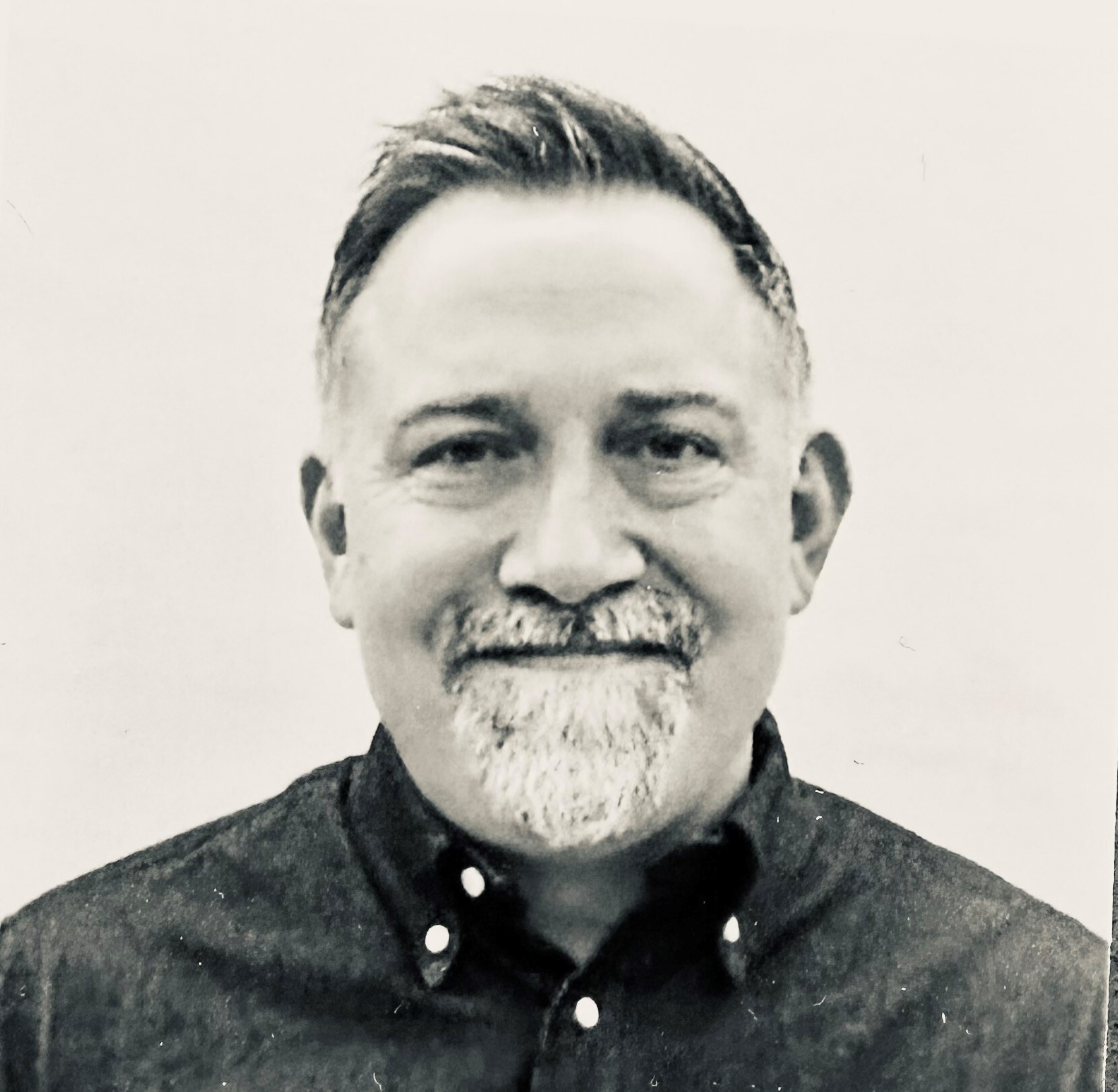
Marcus Hopper, AIA, NCARB, LEED ID+C
Project Director/ Senior Associate
Gensler
Marcus Hopper leads Northwest Regional Design Management for Gensler. His research on material reuse in office renovations, published as "What's Old is New Again -- Circumnavigating the Circular Economy," brings valuable insights to the circular economy within design work. Marcus's expertise in sustainable design and circular building practices aligns perfectly with Gensler's focus on regenerative action and climate innovation.
-
Register
- Attendees - $50
- More Information
-
Register
-
Contains 3 Component(s), Includes Credits
Design Skills | Wellness
As we stand at the intersection of art and science, of imitation and innovation, of consumption and creation, creativity's future holds unique potential. In an era where information floods our senses and technology reshapes thinking patterns, the ability to focus has become a precious resource. Our physical surroundings play a key role in enhancing or hindering individual and group creative capabilities. This session explores how scientific research into environmental psychology is leveraged to create spaces that support focus and creativity. From ambient sounds to colors, natural materials, light, & spatial configuration, our environments shape creative potential. Understanding these principles isn't just about designing better workplaces--it's about creating environments that help navigate information while maintaining the clarity for innovative thinking. The future of creativity depends on our ideas, and ability to create spaces that help us think clearly enough to have them.
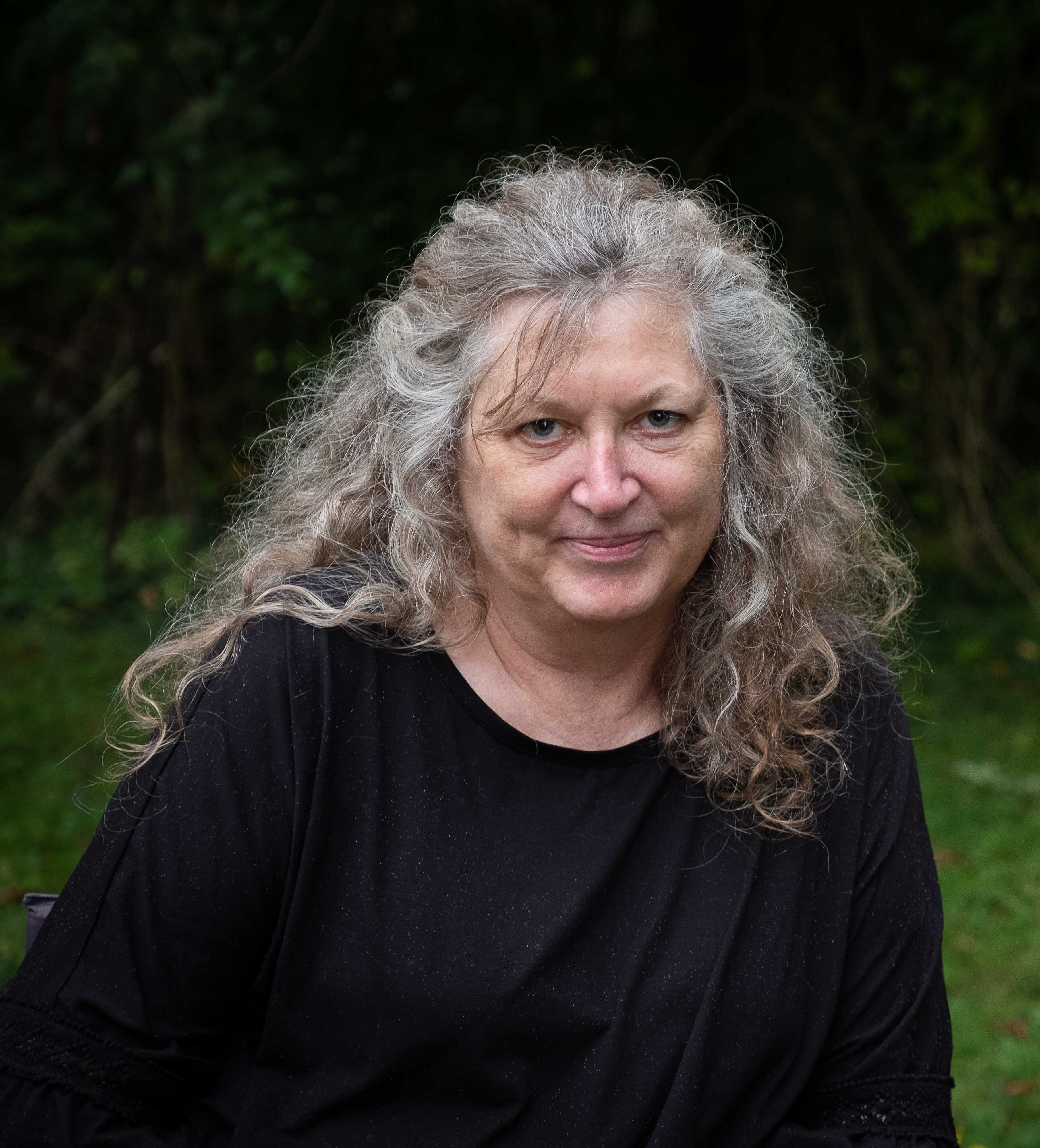
Sally Augustin, Phd
Director of Research
IA Interior Architects
Sally Augustin, PhD, is a practicing environmental psychologist and the Director of Research at IA Interior Architects. She has extensive experience integrating neuroscience-based insights to develop recommendations for the design of places, objects, and services that support desired cognitive, emotional, and physical outcomes/experiences. Augustin, who is a Fellow of the American Psychological Association, is the co-editor of The Science of People and Office Design (2025) and a 2024 TEDx speaker.
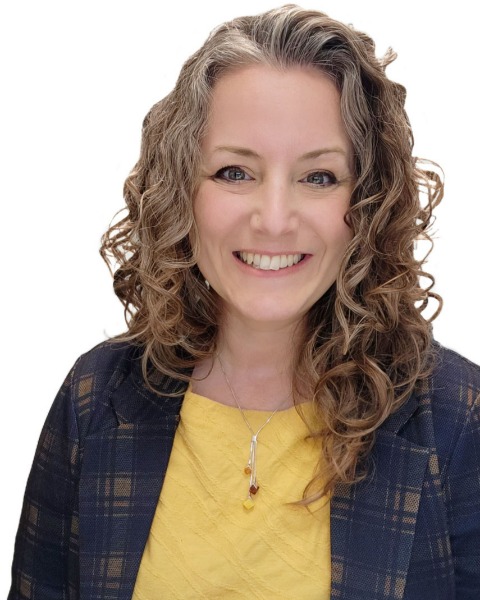
Valerie Jardon, RID, IIDA, NCIDQ, Fitwel Ambassador
Strategy Director
IA Interior Architects
Valerie Jardon, Strategy Director at IA Interior Architects with 18 years of design strategy experience and an Executive MBA, is a respected design industry leader pushing workplace innovation for global corporate clients. With a passion for understanding people to create purposeful spaces, her holistic research extracts emerging needs and propels companies into the future of belonging through an empathetic yet results-driven lens—fusing her design degree and business savvy to unlock the potential of places and people in the workscape.
-
Register
- Attendees - $50
- More Information
-
Register
-
Contains 3 Component(s), Includes Credits
Industry Directions | Design Skills
GEN Z. DESIGNS BY AND FOR THIS NEW GENERATION. What matters to Gen Z? How does this generation think about life, work, play, sustainability and collaboration? Insights from the real world of Furniture Design at NU. Hemant Jha created and teaches a new course at NU: Design Objects/Furniture Design. 10 student makers from across disciplines at NU create 10 unique pieces of furniture, providing unique personal, real-world insights into what matters to this generation of future consumers and buyers. What's the future of furniture? Stay ahead of the curve. Join Hemant in conversation at this creative seminar.
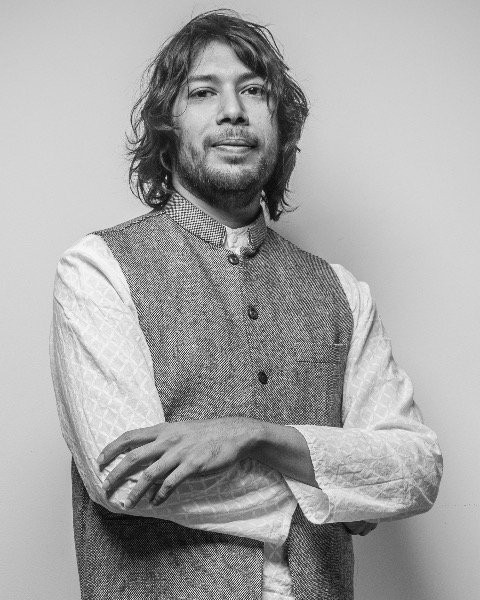
HEMANT JHA, M.Arch YSoA
Faculty&Advisor
Segal Design Institute, Northwestern University
I am an architect and designer, machinist and strategist, entrepreneur and educator. I believe design is creative problem-solving. I approach complex challenges with a naturally multidisciplinary perspective. As an educator, I teach human-centered design at the Segal Design Institute, Northwestern University, and have taught at IIT Institute of Design, CEPT University, and Kellogg School of Management. Through my work, I demonstrate that design, strategy, innovation, sustainability, accessibility and profitability can align to benefit both people and planet.-
Register
- Attendees - $50
- More Information
-
Register
-
Contains 3 Component(s), Includes Credits
Sustainability | Workplace
The renovation and restack of 13 floors at the United Airlines headquarters in Chicago created a hybrid workplace infused with a dynamic energy that reinforces employee pride. This space brings together staff through shared experiences connected to United's brand story: an airline where Good Leads the Way. Re-use and revitalization of the existing space was a priority to align with United's sustainability goals. Circular design strategies were implemented, creating a next-life in lieu of an end-life for many of the tenant improvement materials and furniture. After optimizing reuse, new FF&E specifications included criteria for recycled content, material and occupant health, yielding a significant embodied carbon reduction of over 3,000 metric tons of CO2e emissions. This large-scale project case study demonstrates how circular design/economy strategies can be incorporated to deliver successful next-generation workplace environments while having a positive impact on people and planet.
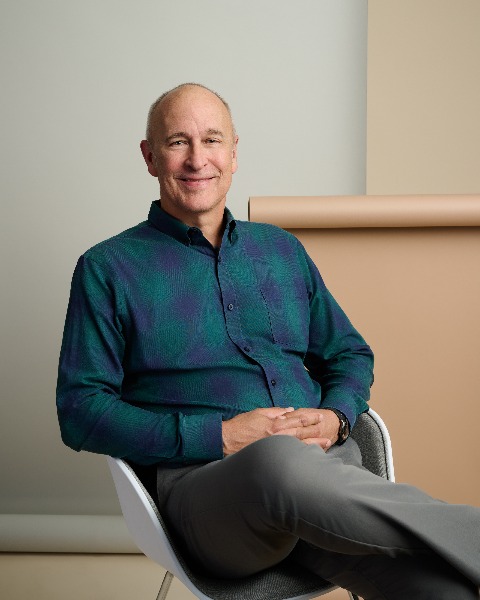
Bob King
Associate Principal
Continua Interiors
Bob King, Associate Principal at Continua Interiors, has a proven record of leadership and client satisfaction. As the key Principal for the UAL Willis Refresh project, he ensured seamless collaboration among UAL, IA, and JLL. A top producer for several years, Bob’s success stems from strong leadership and a talented team. His career began in West Michigan, where an internship at Herman Miller ignited his passion for innovative office environments. Known for meaningful client relationships and tailored solutions, Bob’s dedication consistently drives positive outcomes for clients and colleagues.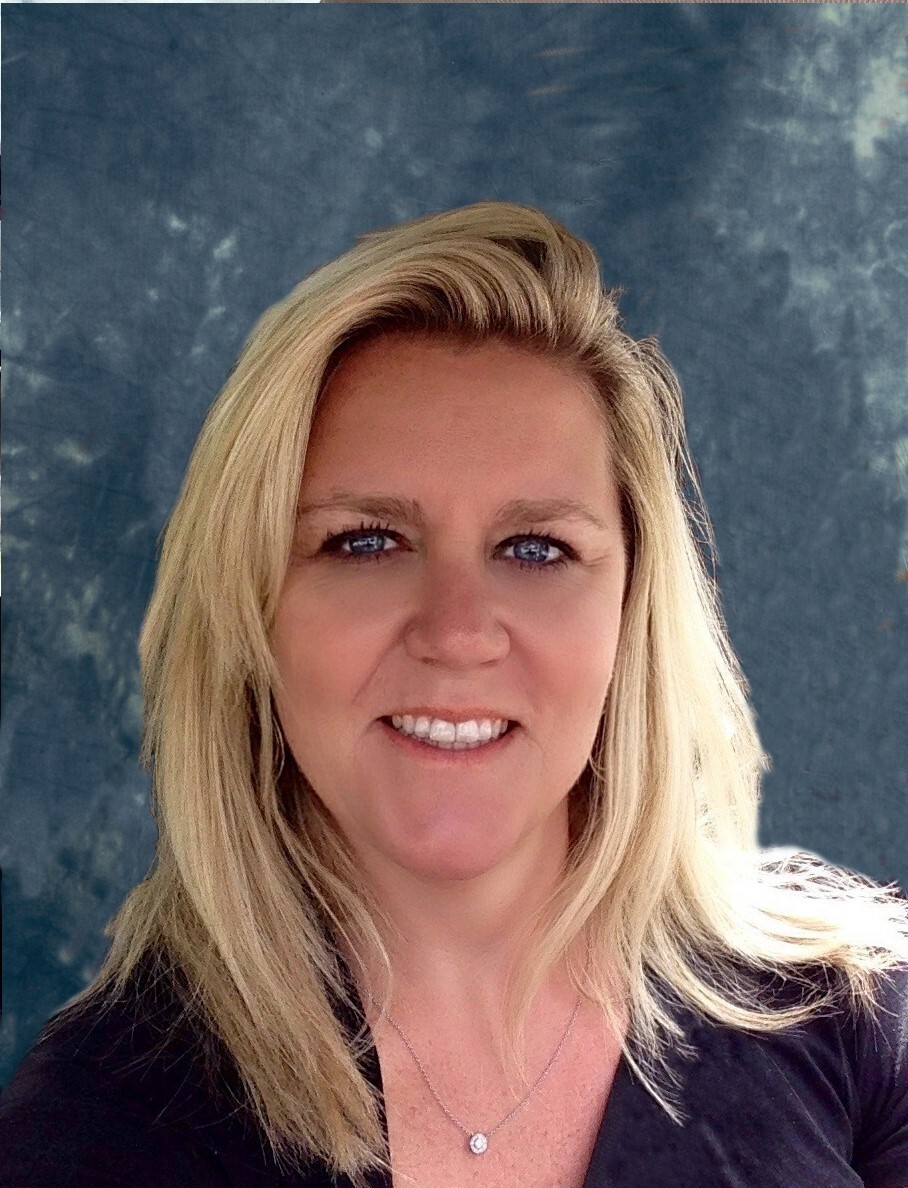
Amy Gaddis, AIA
Aviation Strategy, Design, & Construction
ID8 Design + Consulting
Amy Gaddis is a strategic leader with a passion for thinking of new possibilities and new ways of doing ordinary things. With extensive experience building teams of owners, architects, interior designers, engineers, stakeholders and project managers, Amy is known for driving solutions focused on creating unique and transformational spaces for customers, the traveling public, stakeholders, and the workforce.
Amy’s approach is one of agility and authenticity, focused on developing solutions and environments which are resilient – more agile and organic to allow for future flexibility and adaptability.

Erin Dayrit, NCIDQ, IIDA
Senior Designer
IA Interior Architects
Erin Dayrit is an Senior Associate and Senior Designer with over 15 years of experience where she leads design strategy for workplaces across the nation supporting client’s business, workflow and brand in the built environment and focus on incorporating inclusive, sustainable design into projects. Client’s include United Airlines, McDonald’s, Papa Johns, and Coca-Cola. She earned her Bachelor of Science from the University of Wisconsin-Madison and her Master of Interior Design from Harrington College of Design. She is also an NCIDQ Certified Interior Designer and a member of IIDA.
Brett Gardner, RID, LEED AP BD+C, CSR-P
Senior Director of Sustainability
IA Interior Architects
Brett Gardner is IA’s Senior Director of Sustainability and leads IA’s organizational ESG initiatives and client sustainability services through IA’s Ecos Studio. He has over 32 years of combined experience in the commercial interior design and environmental health industries with the completion of over 15 million square feet of projects in the US and global locations. He has also led and managed the LEED Certification process on over 50 projects, including 4 platinum and 24 gold certifications. Brett is a Certified Sustainability Practitioner (CSR-P), Illinois Registered Interior Designer (NCIDQ), and LEED AP BD+C.-
Register
- Attendees - $50
- More Information
-
Register
-
Contains 3 Component(s), Includes Credits
Industry Directions | Sustainability
Join ASID as we envision a future where design fosters sustainability, inclusivity, and health. In celebration of its 50th anniversary, ASID focuses on the next 50 years, exploring how design will respond to climate challenges, technological advances, and societal shifts. Experts will discuss key findings from the 2025 Trends Outlook report, emphasizing holistic approaches to creating healthier environments. The session will explore wellness-focused spaces, from hospitals to residential care, and the impact of design on patient outcomes and community health. Correspondingly, this session will dive into the Circular Economy, highlighting design's role in reducing waste, promoting material reuse, and enhancing accessibility.

A.J. Paron
Design Futurist
SANDOW Design Group
A.J. Paron has acquired significant experience working in the design/build industry. She has created and led a multi-million dollar award-winning design/build firm, developed national programs for ASID, developed and funded design research programs for the University of Minnesota and pioneered various charitable programs. She is now Executive Vice President, B2B, at SANDOW. Her work is featured in many television segments on HGTV, PBS and Bob Vila. She helps clients look to the future when designing and specializes in design implementation, collaboration, environmental initiatives/LEED, WELL certification, change management, with expertise on designing for those with autism in healthcare and education interiors.
Ruju Jasani, IIDA, ASID, NCIDQ
Founder
Jasani Studio
Ruju Jasani, IIDA, ASID, ICSC, NCIDQ, Assoc. AIA, SEED is an interior architect and founder of Jasani Studio specializing in retail, hospitality and senior living environments. Her award-winning work comprises projects in North America, Europe, China and India. Through strategic ideation and research-based frameworks, Ruju designs for social impact as well as business outcomes. She has led a range of notable projects from large commercial developments to artisanal neighborhood destinations.
Ruju is a frequent speaker at leading industry conferences like GATHER and Environments for Aging to name a few. Casa Vogue, Pin-Up Magazine and Business of Home have featured her writing among other publications. She is actively involved in professional mentorship and student career development.
Ruju is Director At-Large of the ASID National Board of Directors. Previously, she served as national committee chairperson for the Committee on Adaptive Living on behalf of ASID and on the national Strategic Partnerships sub-committee to the Equity Council on behalf of IIDA.
Ruju holds a BFA, Interior Architecture from Academy of Art University and a BA, English from the University of Bombay. She has lived in Bombay, New York, London and San Francisco. Previously, Ruju was a retail leader at Gensler headquartered in San Francisco.

Michael Cook
Regional Manager
Andreu World
Michael Cook has been on the vendor side of the A&D community for 30 years serving in a variety of capacities from product development to sales management. From the vendor side, he has worked to drive certifications like Project Greenhealth and Cradle to Cradle. He believes deeply in the shared responsibility of vendor and specifier to deliver safer, healthier interiors to all communities. Michael has participated in round table discussions like Circular Future Hackathon and I.D. Re:Source and delivers a compelling CEU on sustainable manufacturing to clients nationwide. He currently leads A&D sales efforts serving as a bridge from vendor to designer. He considers Andreu World to be the harbinger of a new generation of manufacturing engaged in driving positive outcomes socially and environmentally.

Dawn Haynie, Ph D., ASID Educator
Research Fellow
ASID
Dr. Dawn Haynie offers a distinctive, interdisciplinary approach to design. She has extensive experience as a researcher, practitioner, and educator across the disciplines of urban design, architecture, interiors, and graphic design. Her work combines research-based strategies with the lessons learned though her years of professional practice to enhance the spatial experience. As the Research Fellow for the American Society of Interior Designers (ASID), she is managing their internal and external research on the interior design industry.
Kristie Nicoloff, ASID, IIDA, RID, NCIDQ
Associate Principal and Senior Interior Designer
LS3P
Kristie Nicoloff is an award-winning, nationally accredited designer with over 28 years of experience in healthcare interior design and facility project management. She currently serves as the Operations & Finance Manager for the Greenville and Asheville offices of LS3P Associates LTD. During COVID, Kristie co-led research on the effects of COVID-19 within building facilities and has spoken at ASID’s National conferences on topics such as the impact of COVID-19 in design and the workplace. She has further presented on the basics of ESG in design, and the 'Disruption' in our profession related to AI, neurodiversity, and sustainability.
-
Register
- Attendees - $50
- More Information
-
Register
-
Contains 3 Component(s), Includes Credits
Wellness | Sustainability
In today's real estate market, wellness is emerging as a critical catalyst for growth. This on-site CEU will explore how design that intentionally supports the holistic health of users elevates individual and community well-being and unlocks significant market opportunities. Drawing from Gensler's research, the session will define and survey a $580 billion U.S. Wellness Real Estate Market and its expansion across the workplace, multifamily residential, hospitality, and retail sectors. Attendees will learn how purposeful, wellness-centered design elements like walkability, access to nature, leisure, physical activity, and social connectivity cultivate thriving communities and deliver superior financial performance. Real-world examples will illustrate how residential developments rooted in nature, immersive wellness hospitality environments, and office spaces that foster inclusivity are supercharging investment across industries and expanding the market with outsized value.
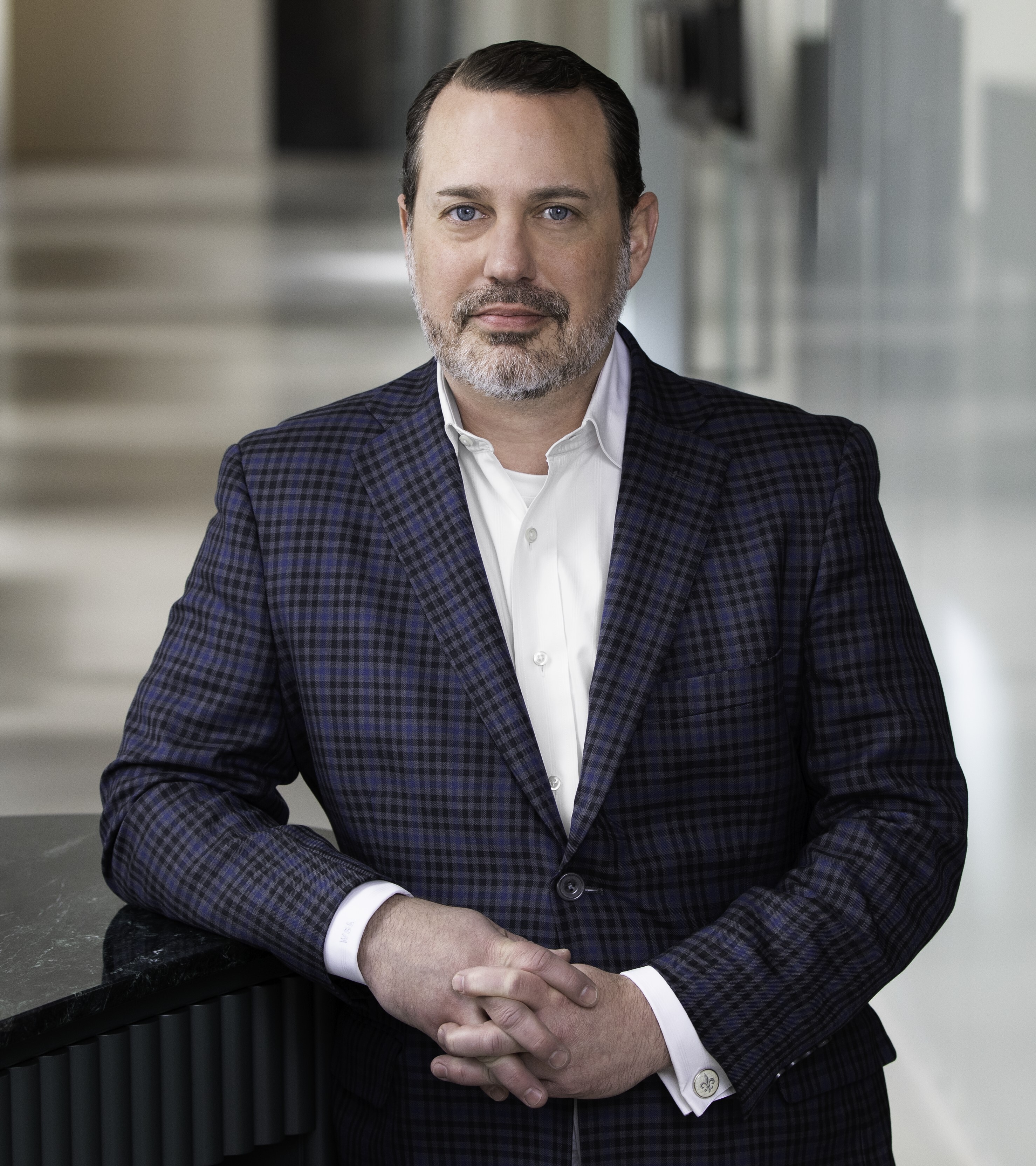
Wes LeBlanc
Principal, Analytics Director
Gensler
Wes is an economist that employs real estate analysis, financial due diligence, and market assessments to help stakeholders interpret data and make meaningful project decisions. In his role as a Strategy Director based in Gensler’s Chicago office, he leads a team of professionals focused on quantitative analysis, including economists, market analysts, business planning professionals, urban planning professionals, economic development specialists, and statisticians. His diverse experience spans across more than 300 projects in the U.S. and around the globe for a range of public and private corporations, developers, institutions, and governments. He specializes in complex, ambiguous, and multidisciplinary assignments.
.jpg)
Michael Schur, AIA, LEED AP
Global Wellness Practice Leader
Gensler
Michael Schur, AIA, LEED Global Wellness Leader, Gensler As a Global Wellness Leader, Michael leads a multi-disciplinary team dedicated to delivering holistic design solutions that improve physical and emotional wellbeing, support equity, and empower individuals, communities, and organizations. A strategic connector across practices and a licensed architect with over 15 years of experience, he is driven by the belief that design has the power to transform human experiences and outcomes. Based in Gensler’s Chicago office, Michael works across the globe on complex, future-shaping projects spanning healthcare, education, and wellness projects. Working with industry-leading clients, Michael bridges the gap between strategy and design to identify impactful, people-centered ideas and bring them to life. He frequently writes and speaks about the future of health and wellness and leads research on topics ranging from inclusion to health to digital clinical environments, and more. Wes LeBlanc Strategy Director and Principal, Gensler Wes is an economist that employs real estate analysis, financial due diligence, and market assessments to help stakeholders interpret data and make meaningful project decisions. In his role as a Strategy Director based in Gensler’s Chicago office, he leads a team of professionals focused on quantitative analysis, including economists, market analysts, business planning professionals, urban planning professionals, economic development specialists, and statisticians. His diverse experience spans across more than 300 projects in the U.S. and around the globe for a range of public and private corporations, developers, institutions, and governments. He specializes in complex, ambiguous, and multidisciplinary assignments.-
Register
- Attendees - $50
- More Information
-
Register
-
Contains 3 Component(s), Includes Credits
Design Skills | Technology
In this presentation, our speakers will provide a summary of how the various forms of intellectual property (utility and design patents, copyrights, and trademarks) can be employed to protect your company's inventions, product designs, artistic works, and brands in the commercial interior design industry. IP portfolio development and maintenance, as well as rights enforcement and online takedown efforts, will be covered.
.jpg)
James Aquilina, J.D.
Partner, Washington D.C Office Co-Managing Partner
Quarles & Brady LLP
James Aquilina advises his clients on intellectual property (IP) procurement, strategic portfolio development and management, offensive and defensive dispute matters, licensing and anti-counterfeiting efforts. An internationally recognized IP strategist and leader in the field of U.S. design law, he counsels industry-leading and emerging clients in the areas of utility and design patents, trademarks, copyrights and trade secrets. His representative clients include global companies in the fields of: Personal apparel, including footwear and clothing Consumer packaged goods, including games and puzzles Medical devices Home furnishing Software James takes the time to understand his clients’ businesses and ensure the legal solutions he and his team deliver align with business purposes. He is a true partner to the companies he represents and provides guidance that is clear, succinct and actionable. James is the co-founder and editor in chief of Quarles’ Protecting the Product blog, which focuses on design-related legal rights.-
Register
- Attendees - $50
- More Information
-
Register
-
Contains 3 Component(s), Includes Credits
Workplace | Inclusion
An icon in Camden, NJ for over 150 years, Campbell's continues to invest in and reinvent its headquarters campus. The re-imagination of the headquarter campus started with the Jacobs designed Campbell Employee Center (amenities building) and new workplace strategy for office space in 2010 which transformed the front door of the campus and employee experience. In 2022, Campbell's embarked on another re-imagination of its campus to align with key business drivers for site consolidation, improved team connection for innovation and support new ways of flexible working for people. Key considerations included financial, operational, cultural, and employee success, with the overarching goal to build on the momentum of Campbell's business model of creating people-to-people energy and transform how people come together in a new hybrid work model.

Diane Johnson May
EVP, Chief People and Culture Officer
Campbell's
Diane leads Campbell’s human resources function, including talent acquisition and management, organizational effectiveness, compensation and benefits, and inclusion and diversity. Her team champions our strategy to build a winning team and culture and to help every employee reach their full growth potential. Diane is a member of the Operating Committee, which focuses on Board-level matters and the development of the Strategic Plan and Annual Operating Plan.

Caroline Bross, NCIDQ
Design Lead
Jacobs
Caroline is the Interior Design Lead for Jacobs Philadelphia Office. She has significant experience in the science and technology, commercial, hospitality, and high-end residential market sectors. She has extensive knowledge and experience in workplace strategy, programming, planning, documentation, project management, specification of interior materials, and construction administration. As the Design Lead, Ms. Bross directs the team and works with the client to set the overall design direction for the project
Amy Manley, IIDA, NCIDQ
Global Principal, Work + Change Strategies
Jacobs
Amy is the Global Principal for Jacobs Work + Change Strategy Team. She has created new ways of working for a wide range of both public and private organizations to align mission, vision, and business drivers. Amy’s experience focuses on organizational dynamics and how work, culture and work processes inform business and people performance. As a thought leader in strategy, Amy speaks regularly at national conferences including Coronet Global, BOMA, and Neo Con and recently contributed to a new design research publication, "The Science of People and Office Design".-
Register
- Attendees - $50
- More Information
-
Register
-
Contains 3 Component(s), Includes Credits
Workplace | Wellness
Soundscapes will be the focus of this CEU: what they are, how we can describe them, and how designers can use them to create sonic environments and intentional experiences. The sensory and physiological benefits of natural soundscapes, which encompass geophony, biophony, and anthrophony, will be demonstrated. The presentation will elucidate the distinct differences between anthropogenic sound and noise, emphasizing the unfortunate reality that both external and internal noise can detrimentally impact human health. Furthermore, we propose that designers should integrate sound walks and zone mapping into the earliest phases of design, including programmatic and schematic design, to enhance comfort and productivity in interior spaces. Finally, the presentation will illustrate dynamic sound solutions by specifying materials with texture and high NRC. Going beyond the sound plan, we will also integrate environmental sounds through both natural and artificial means.

Faraz Shah
Brand Director
Turf Design
Faraz S. Shah, Turf Design, Brand Director At Turf, Faraz is the Brand Director, where he’s building a brand that connects with aspiring architects and interior designers. He’s all about creating an experience that speaks directly to the people who shape the built environment. Whether he’s teaming up with designers, connecting with future industry leaders, or shaping the brand’s story, Faraz ensures that Turf leverages its acoustic solutions to add beauty, creativity, and well-being to spaces where people live, work, and create. Great design goes beyond aesthetics—it’s about how spaces can make you feel and how well they serve the people using them. Faraz approaches every project with curiosity and empathy, always striving to understand what makes a space truly resonate. With over 15 years of experience spanning product development, branding, and marketing, Faraz brings a unique blend of technical expertise and creative insight. Faraz’s foundation in Industrial Design has fueled his passion for building better products and spaces through understanding, narrative, and purposeful design. He is also a host of the Sense of Space podcast.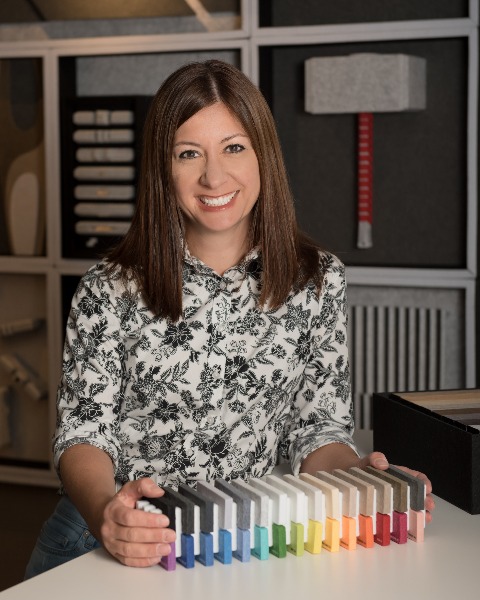
Carolyn Ames Noble, ASID, WELL AP, WELL Faculty
Founder and Director of Design
Ames Design Collective + Collaborator of Turf Design
Carolyn Ames Noble is the principal of Ames Design Collective, where she leads interior and product design. Carolyn is a longtime creative collaborator for Turf Design; together they have created multiple award-winning collections, such as Stone Textures and Hues. She consults multiple commercial product lines specializing in acoustics, architectural solutions, flooring, and more with a focus on sustainability, biophilia, and sensory design. Carolyn is the Chair of the ASID Foundation and a WELL Faculty member. Carolyn leads the direction, development and interactive and engaging presentation delivery of multiple CEU courses in the interior design & architecture industries.-
Register
- Attendees - $50
- More Information
-
Register




